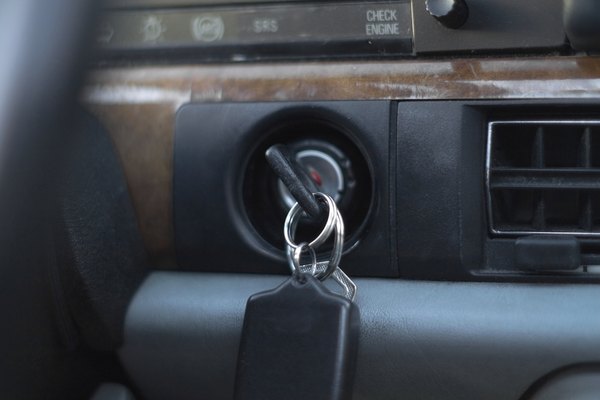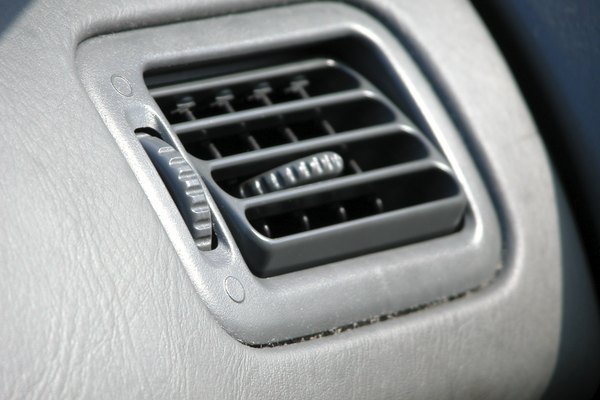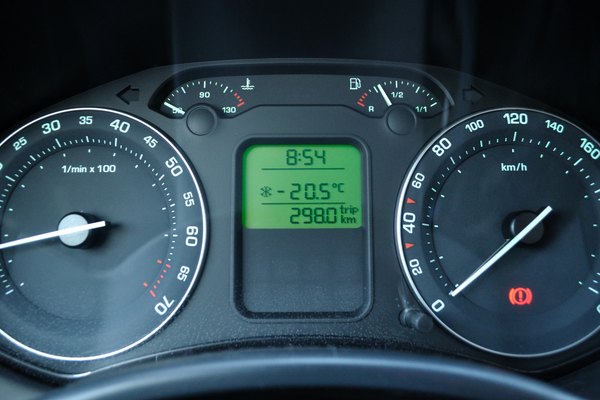How to Tell If Your Car Is Low on Freon?
by Lee SallingsUpdated June 06, 2023
Over time, your vehicle's air-conditioning system may leak out enough freon to require a recharge. This is a normal occurrence due to seal shrinkage and compressor inactivity during the colder winter months. Checking your system to determine recharging needs requires the use of A/C gauges and a thermometer. The skill level needed is well within the capabilities of the average home mechanic, and the tools required are available for sale or rent at most large auto parts stores.
Things You'll Need
- A/C gauges
- Thermometer
1. Attach the gauges

Attach the gauges to the service ports of the vehicle located on the air conditioning lines. The low-pressure port will be between the accumulator-- located on the passenger side of the firewall--and the compressor. The high-pressure port is located on the line between the condenser--located in front of the radiator--and the evaporator on the firewall. Refer to your service manual for more information on the exact location for your vehicle.
2. Start the engine

Start the engine and set the air conditioning controls for max A/C. If the system has a recirculation air switch or button, select recirculation air. Insert a thermometer into the center air conditioning vent on the dash.
3. Allow the compressor to cycle

Allow a few minutes for the compressor to cycle and the pressures to stabilize, and read the gauge readings. In a normal system, the low-pressure side will read anywhere from 25 to 45 psi, depending on outside temperature. Higher outside temperatures cause higher gauge readings. The high-side pressure will read between 250 psi and 400 psi, again depending on outside temperature. Readings lower than this, on both sides, indicate low refrigerant levels.
4. Read the temperature

Read the temperature on the thermometer. Inside temperatures that are 40 degrees Fahrenheit or lower than outside temperatures indicate normal system function.
Resources
Things You'll Need
- A/C gauges
- Thermometer
Writer Bio
Lee Sallings is a freelance writer from Fort Worth, Texas. Specializing in website content and design for the automobile enthusiast, he also has many years of experience in the auto repair industry. He has written Web content for eHow, and designed the DIY-Auto-Repair.com website. He began his writing career developing and teaching automotive technical training programs.




